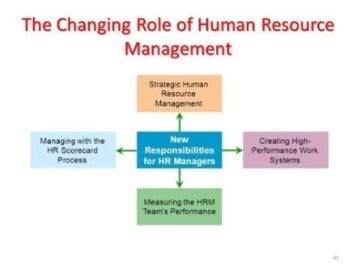Override the Liability Account Using Subledger Accounting Rules

The most common liabilities are usually the largest like accounts payable and bonds payable. Most companies will have these two line items on their balance sheet, as they are part of ongoing current and long-term operations. Current assets represent all the assets of a company that are expected to be conveniently sold, consumed, used, or exhausted through standard business operations within one year.

The balances in liability accounts are nearly always credit balances and will be reported on the balance sheet as either current liabilities or noncurrent (or long-term) liabilities. There are also cases where there is a possibility that a business may have a liability. You should record a contingent liability if it is probable that a loss will occur, and you can reasonably estimate the amount of the loss. If a contingent liability is only possible, or if the amount cannot be estimated, then it is (at most) only noted in the disclosures that accompany the financial statements. Examples of contingent liabilities are the outcome of a lawsuit, a government investigation, or the threat of expropriation.
Current vs. non-current liabilities
Accounts Payable – Many companies purchase inventory on credit from vendors or supplies. When the supplier delivers the inventory, the company usually has 30 days to pay for it. This obligation to pay is referred to as payments on account or accounts payable. If a business wishes to purchase computer equipment worth £300, the purchase can be made in many possible ways.
Liabilities in accounting are the financial obligations of a company, such as money owed to suppliers, wages owed to staff, and outstanding loans. One is listed on a company’s balance sheet, and the other is listed on the company’s income statement. Expenses are the costs of a company’s operation, while liabilities are the obligations and debts a company owes. Expenses can be paid immediately with cash, or the payment could be delayed which would create a liability. The liabilities definition in financial accounting is a business’s financial responsibilities.
Liabilities are reported on a company’s balance sheet along with its assets and owners’ equity. When presenting liabilities on the balance sheet, they must be classified as either current liabilities or long-term liabilities. A liability is classified as a current liability if it is expected to be settled within one year. Accounts payable, accrued liabilities, and taxes payable are usually classified as current liabilities. If a portion of a long-term debt is payable within the next year, that portion is classified as a current liability. All short-term liabilities, also called current liabilities, are debts or obligations due within a year or less.
We can conclude that the liabilities’ position is a clear indicator of the financial health of any organization. The most liquid of all assets, cash, appears on the first line of the balance sheet. Companies will generally disclose what equivalents it includes in the footnotes to the balance sheet. You should keep in mind that liabilities are financial obligations, not just debt.
- Short-term liabilities are financial obligations that become due within a year, while long-term liabilities are due in a year or longer.
- Liabilities are a company’s financial obligations, like the money a business owes its suppliers, wages payable and loans owing, which can be found on a business’s balance sheet.
- This includes any obligations owed to other businesses, lenders, or customers.
- Whenever a business records an obligation in a liability account, it is known as the debtor.
An operating cycle, also referred to as the cash conversion cycle, is the time it takes a company to purchase inventory and convert it to cash from sales. An example of a current liability is money owed to suppliers in the form of accounts payable. The term “accrued liability” refers to an expense incurred but not yet paid for by a business. These are costs for goods and services already delivered to a company for which it must pay in the future. A company can accrue liabilities for any number of obligations and are recorded on the company’s balance sheet. They are normally listed on the balance sheet as current liabilities and are adjusted at the end of an accounting period.
Understanding Accrued Liability
Liabilities are financial obligations a business owes to other persons, businesses and governments. Short-term liabilities are financial obligations that become due within a year, while long-term liabilities are due in a year or longer. A company’s total liabilities is the sum of its short-term and long-term liabilities.
Cetrom Introduces Cetrom Connect to Bridge IT Gap Created by … – CPAPracticeAdvisor.com
Cetrom Introduces Cetrom Connect to Bridge IT Gap Created by ….
Posted: Tue, 01 Aug 2023 18:10:20 GMT [source]
Operating with cash means that you pay and take payments with it, whether it be with physical cash or through a company checking account. This account may or may not be lumped together with the above account, Current Debt. While they may seem similar, the current portion of long-term debt is specifically the portion due within this year of a piece of debt that has a maturity of more than one year. For example, if a company takes on a bank loan to be paid off in 5-years, this account will include the portion of that loan due in the next year.
Current (Near-Term) Liabilities
Unlike assets and liabilities, expenses are related to revenue, and both are listed on a company’s income statement. By far the most important equation in credit accounting is the debt ratio. It compares your total liabilities to your total assets to tell you how leveraged—or, how burdened by debt—your business is. Long-term liabilities, also known as non-current liabilities, are financial obligations that will be paid back over more than a year, such as mortgages and business loans.
Xtant Medical Announces Second Quarter Revenue Growth of 32% – GlobeNewswire
Xtant Medical Announces Second Quarter Revenue Growth of 32%.
Posted: Tue, 01 Aug 2023 11:00:00 GMT [source]
Companies try to match payment dates so that their accounts receivable are collected before the accounts payable are due to suppliers. Liabilities come in different forms but are not the same thing as expenses. Expenses are operating costs, while liabilities are financial obligations owed to others, such as wages and loan payments. Liabilities are either short-term or long-term, depending on how long they take to pay back.
Create a free account to unlock this Template
Liabilities are settled over time through the transfer of economic benefits including money, goods, or services. See how Annie’s total assets equal the sum of her liabilities and equity? If your books are up to date, your assets should also equal the sum of your liabilities and equity. No one likes debt, but it’s an unavoidable part of running a small business. Accountants call the debts you record in your books “liabilities,” and knowing how to find and record them is an important part of bookkeeping and accounting. FreshBooks’ accounting software makes it easy to find and decode your liabilities by generating your balance sheet with the click of a button.
Bench assumes no liability for actions taken in reliance upon the information contained herein. Janet Berry-Johnson, CPA, is a freelance writer with over a decade of experience working on both the tax and audit sides of an accounting firm. She’s passionate about helping people make sense of complicated tax and accounting topics. Her work has appeared in Business Insider, Forbes, and The New York Times, and on LendingTree, Credit Karma, and Discover, among others. Liabilities can further be classified into several distinct types. To calculate liabilities, first you need to know what liabilities you have.

It also includes the ability of the organization to repay loans, long-term debt, and interest. It is a simplified representation of how the financial side of the business functions. Liabilities differ between the organization’s total assets and its owner’s equity. These are adp holds the first pride connection rs long-term liabilities that are due in over a year’s time. You occasionally need a loan to purchase assets, such as vehicles and tools, that you need to run and grow your business. Let’s say that a company has more expenses than it does revenues over the past three years.
Want More Helpful Articles About Running a Business?
Current liabilities, also known as short-term liabilities, are financial responsibilities that the company expects to pay back within a year. Assets are broken out into current assets (those likely to be converted into cash within one year) and non-current assets (those that will provide economic benefits for one year or more). Simply put, a business should have enough assets (items of financial value) to pay off its debt. In the U.S., only businesses in certain states have to collect sales tax, and rates vary.
Many accountants believe that they cannot be liable under federal securities laws because their practice does not involve securities. However, the comprehensive definition of securities indicated in the statutes and the pertinent case law has left many accountants subject to unanticipated liability lawsuits. Auditors typically purchase professional liability insurance to protect themselves from any monetary damage arising from such situations. This additional cost for the accountant can often raise the cost of the audit. Accountant’s liability adds an element of pressure to an accountant’s performance of duties. An accountant’s actual participation in fraud can be hard to prove because management could be the ones committing the fraud, which the accountant can fail to notice.
- This risk of being responsible for fraud or misstatement forces accountants to be knowledgeable and employ all applicable accounting standards.
- The short version is that expenses are used in calculating net income.
- This line item is in constant flux as bonds are issued, mature, or called back by the issuer.
- Liabilities in accounting are categorized depending on when they are due or must be paid.
In business, the liabilities definition in accounting refers to the debts or financial obligations of the business which are owed out to others. Liabilities are the things that decrease a business’s value since they don’t own these items and they must be given out to other businesses or customers. Liabilities can take many forms, from money owed for operating expenses to bills incurred by the business to the inventory that is owed to customers. Other liabilities include notes payable, accounts payable, and sales taxes. Any obligations that the business owes to others are classified as liabilities of the business. Liabilities are legally binding obligations that are payable to another person or entity.
AT&T clearly defines its bank debt that is maturing in less than one year under current liabilities. For a company this size, this is often used as operating capital for day-to-day operations rather than funding larger items, which would be better suited using long-term debt. We use the long term debt ratio to figure out how much of your business is financed by long-term liabilities.

There are two main types of liabilities, which include short-term liabilities and long-term liabilities. Another type is referred to as contingent liabilities, which means the item may become a liability, depending on the circumstances. For ordinary negligence, an auditor owes a duty only to their client. An auditor’s liability for general negligence in the conduct of an audit of its client’s financial statements is confined to the client. That being the person or business entity who contracts for or engages the audit services.
